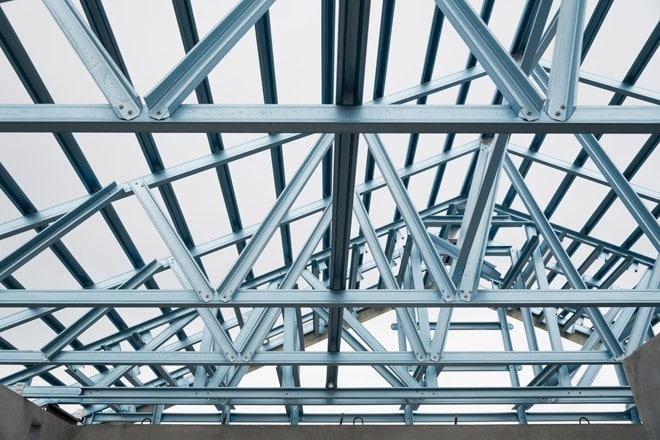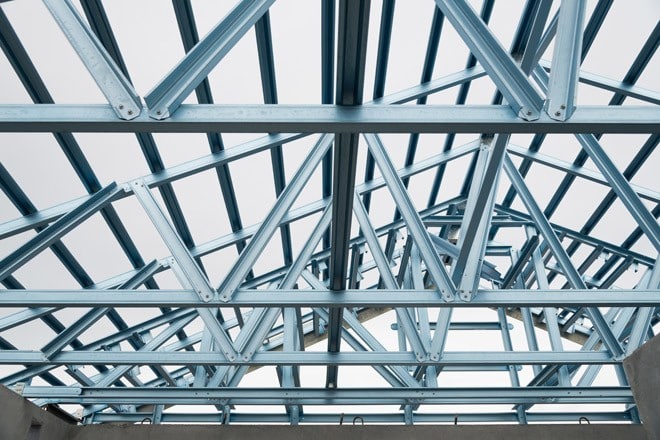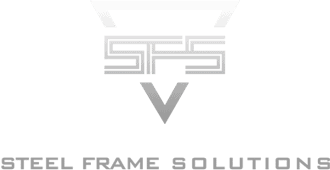Steel Framing is strong, durable and cost-competitive
Key features of steel frame construction
There are two main types of steel frame construction – heavy and light steel frame (LSF) construction.
Heavy steel construction involves a structural skeleton of large steel members. Steel beams can support long spans (eg for large windows or openings), and are often used in combination with other structural systems, like timber or LSF construction for this purpose.
LSF construction can either be used as a complete construction system, including exterior walls and roof framing, or it can be used for interior partitions only. Steel is strong both in tension and compression. LSF construction is comparable in price to timber construction.
LSF construction may be suitable for steeply sloping sites where heavyweight construction could require excavation and extensive foundations.
Steel is easy to handle and can be erected quickly. They are often delivered pre-fabricated to site, and clearly identified for assembly. Because of its strength and flexibility, steel framing is excellent at resisting earthquakes. Steel won’t burn, but will deform under high heat. It is vermin and insect proof but vermin can live in spaces between light steel framing.
All Climates
Steel can be used in all climate conditions and is durable and long-lasting if kept dry. While steel framing does not absorb water, even galvanised framing can rust if it is exposed to moisture for extended periods.
Steel is highly conductive to heat, so all steel framing must incorporate a ‘thermal break’ – a layer of insulating material between steel framing and cladding to reduce heat loss.
LSF can be difficult to insulate due to of the shape of the steel frame members. Because of the conductivity of steel, it is important that the insulation is well installed to fit snugly inside the profiles, leaving no gaps. Designers and builders should consider how insulation will be installed in junctions and areas with multiple framing members, such as corners and above openings. Insulation may need to be installed while the framing is being put up – rather than afterwards – to prevent empty voids and resulting weaknesses in the thermal envelope.
Steel is a poor sound insulator; however there are systems available to provide acoustic isolation. These separate the linings from the framing to avoid sound travelling through the steel to the neighbouring room. Fire-rated versions of LSF systems are available for party walls between dwellings.
Steel has the potential to be recycled when the building reaches the end of its useful life.
See also: Steel Framing Compatibility









